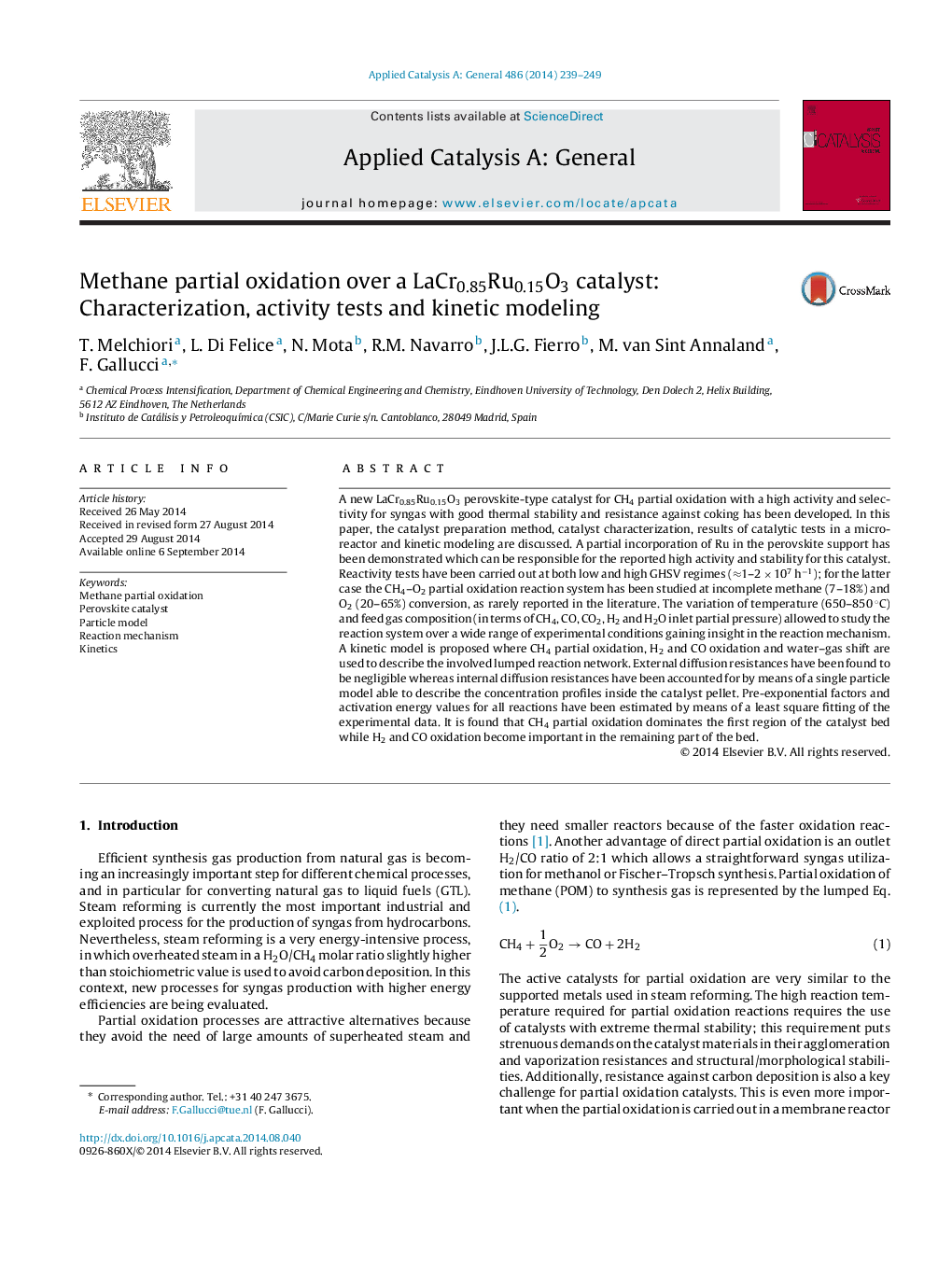| Article ID | Journal | Published Year | Pages | File Type |
|---|---|---|---|---|
| 39451 | Applied Catalysis A: General | 2014 | 11 Pages |
•A new LaCr0.85Ru0.15O3 perovskite-type catalyst has been prepared and characterized.•The catalyst is stable and very active at low temperatures and oxygen concentrations.•A kinetic model for CH4 partial oxidation, H2 and CO oxidation and water–gas shift is proposed.•The developed kinetic model can be used to describe and evaluate partial oxidation processes.
A new LaCr0.85Ru0.15O3 perovskite-type catalyst for CH4 partial oxidation with a high activity and selectivity for syngas with good thermal stability and resistance against coking has been developed. In this paper, the catalyst preparation method, catalyst characterization, results of catalytic tests in a micro-reactor and kinetic modeling are discussed. A partial incorporation of Ru in the perovskite support has been demonstrated which can be responsible for the reported high activity and stability for this catalyst. Reactivity tests have been carried out at both low and high GHSV regimes (≈1–2 × 107 h−1); for the latter case the CH4–O2 partial oxidation reaction system has been studied at incomplete methane (7–18%) and O2 (20–65%) conversion, as rarely reported in the literature. The variation of temperature (650–850 °C) and feed gas composition (in terms of CH4, CO, CO2, H2 and H2O inlet partial pressure) allowed to study the reaction system over a wide range of experimental conditions gaining insight in the reaction mechanism. A kinetic model is proposed where CH4 partial oxidation, H2 and CO oxidation and water–gas shift are used to describe the involved lumped reaction network. External diffusion resistances have been found to be negligible whereas internal diffusion resistances have been accounted for by means of a single particle model able to describe the concentration profiles inside the catalyst pellet. Pre-exponential factors and activation energy values for all reactions have been estimated by means of a least square fitting of the experimental data. It is found that CH4 partial oxidation dominates the first region of the catalyst bed while H2 and CO oxidation become important in the remaining part of the bed.
Graphical abstractFigure optionsDownload full-size imageDownload high-quality image (154 K)Download as PowerPoint slide
